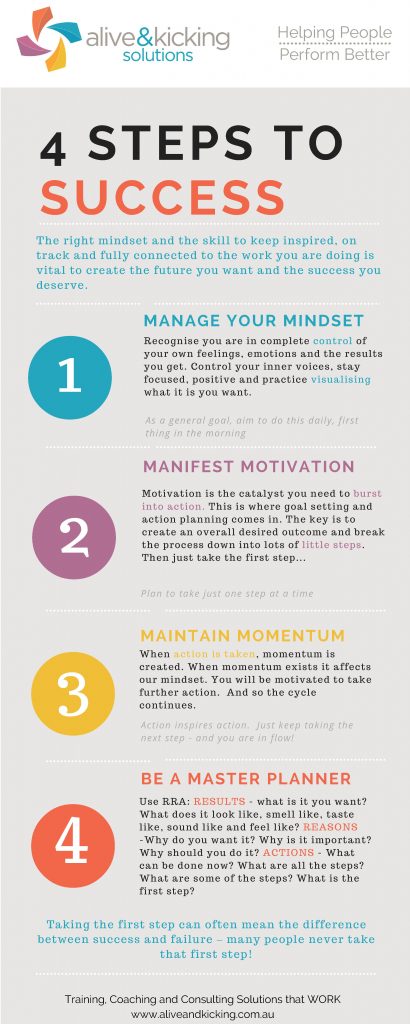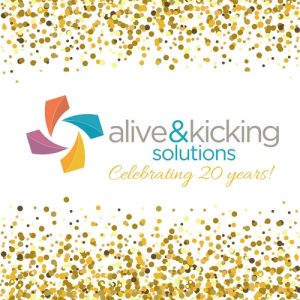- Consider whether or not you will be able to look proudly into the mirror the next day.
- Reflect on past difficult decisions and how you made them. The problems don’t have to be similar for the method to work the same.
- Be silent, go inside your mind, your heart, and your gut, and listen to your instincts.
- Consider Time Frame: If there is little or not urgency, set aside time to give careful thought to the decision. The worst thing you can do is act in haste.
- Ask yourself, “Who will it affect and what does my heart tell me?”
- Imagine having made the decision. If you get a feeling of relief, that’s the way to go, even if it’s coupled with sadness.
- Ask yourself, “What is the most pleasurable choice, and where is the most fun?”
- Check with your internal compass. How will you feel if you make the decision in one way? How will you feel if you make the other?
- Make mistakes and learn from them. Many people lose valuable opportunities because of indecision, vacillation, and analysis paralysis! Most decisions can be “unmade” after the fact. Yes, you may have to label it a mistake – so what? Everyone makes mistakes. Yes, sometimes it can be a costly exercise if you make the wrong decision ~ most of these won’t sink the ship. Just make the decision – then ACT ON IT.
- Talk it through with friends. Then after you have gathered as much info as possible, decide and act!
- Make a patient effort and have confidence in yourself as decision maker. Whatever choice you make is valid, as you can gain experience and wisdom through any experience, preferred or not.
- Let go of fear. Know there is no “right” or “wrong” decision. Any decision is better than indecision.
- Ask yourself three questions before diving into something new or daunting: What’s the worst that can happen? How likely is that to happen? Can you deal with it if it does happen?
- Go with your first instinct. In most cases, our first instincts are our best ones. When we begin to second guess and dwell on decisions that are against our first instinct, it’s usually the wrong way. That said – most decisions can be reworked if you get feedback that shows you a different direction. Actions will cause outcomes!
- Take a moment to think about the consequences of every course of action, and decide which course will be best for everyone.
- Try to see the situation from all angles. Also ask your elders for advice. They are always great sources! Sometimes you need to walk away from the issue for a bit, and then come back for a fresh look.
- Remember this quote: “Your choices are half chance, so are everybody else’s.”
- If you find that you have to talk yourself into something, it is usually a bad decision. Good decisions usually feel right without much second-guessing.
- “Stay in the tension” as long as possible. If none of the choices feel right, consider delaying the decision until you have clarity (be careful not to wait for “certainly” – this is different from clarity and may never show up). Sometimes another option you hadn’t thought of before becomes apparent.
- Listen to your emotional instinct. If it feels good, authentically good, then go for it. If it does not use caution and back away.
- Take two pieces of paper and write down your options on each. Put them in a hat, close your eyes, and pick one. If you feel disappointed with the outcome, then you know that is the wrong decision to make!
- Reflect on past decisions. Good or bad, each teaches a lesson. To learn from your mistakes is key, but don’t forget your triumphs. They are just as important.
- Consider Vision, Mission, Purpose, Values and Goals: Whether these are personal or business decisions, your actions should be aligned with all of these things. Otherwise, you must ask yourself why you are in a decision making moment. The prerequisite to this is actually knowing and defining your organisation and/or yourself. Gain awareness.
- Consider using decision making strategies or models to help.
- SWOT ( Strengths / Weaknesses / Opportunities / Threats)
- D’Bono’s 6 Thinking Hats
- Kepner-Tregoe Problem Solving Matrix (for complex issues)
- OODA Loop Model (Observe / Orient / Decide / Act)
Category: General
Tips for Faster Decision Making

Our lives are defined by our ability to make decisions. Our careers, relationships, health—anything and everything about our present selves boils down to the decisions we’ve made in the past, yet some of us struggle with decision making. We may have access to data, plenty of options, and generally have everything going for us, but when crunch time rolls around we seize up. Making a firm commitment to a decision eludes us. Here are a few of the labels that might apply:
* Over-thinker * Procrastinator * Slow to act * Analysis paralysis * Perfectionist
Sound familiar? Have you ever felt like you identified with any of these labels? If so then know that you aren’t alone. There are lots of us who spend too much time thinking about our decisions, and not enough time acting upon them.
One of the most common complaints from team members and team leaders, in corporate environments, is about decision making. These complaints can look a lot like knowledge or skill gaps on the surface, though if we dig deeper what we find often is that there is a lack of confidence or a reluctance to engage with decision making.
Do you ever hear questions like:
- Where do I find the XXXX?
- How do I do an ABC transaction?
- Is it okay if I (insert a simple everyday task here)
If these types of questions (and sometimes interruptions) are a regular part of your day – then you may have some people in your team who have low confidence in decision making. If you ask these types of questions frequently, especially if you’ve been trained, and on the job for some time, then you could benefit from some decision making practice too!
Here are some tips to help you or a team member move into a more confident decision making space:
1. Do The Research – where are the answers?
The first step in quick decision making is to ask yourself. . .
- If no one else were here right now for me to ask, where could I go to find the answer?
- Have I exhausted all of the possibilities for looking for the answer myself?
- What do I need to do to create a place to continue to get these types of answers for myself?
2. Set a time limit for decision making (2 minute rule).
Force yourself to take action through a self-imposed deadline. The time limit forces you to quickly assess the pros and cons while quickly coming to a decision. In most cases, it doesn’t have to be 2 minutes. 1-5 minutes will work. The exception is where you have a customer, or other urgent situation at hand.
3. Think black and white to decide
Ask yourself the following:
QUESTION: If I take this action (or make this decision), and I get it wrong, will that be impossible to live with? If the answer is “NO” – and for day to day tasks and decision – it is likely to be “NO” – then ask the next question.
QUESTION: What does my gut tell me is the right course of action here? Get your answer and then ask the final question:
QUESTION: Does this feel RIGHT or WRONG?
Then act!
4. Decide via Random Choice
Sometimes there are multiple options that we have – and they all seem to have equal value, or a similar outcome. If this is the case – take these steps.
- Get rid of any that seem to have any lesser outcome (the worst of the possibilities)
- Write all of the other options down, each on a separate bit of paper – and fold the papers up. Mix up the pile then pick.
- Whatever is written on the paper – take action.
NOTE: If your gut reaction to the option says don’t, then pick again.
5. Create the REAL Worst Case Scenario (W.C.S)
 A fear of failure or making a mistake can stop us from making a decision and taking action. We may well have created a totally disastrous worst case scenario in our head. Often what we don’t do is FACTUALLY contemplate a worst case scenarion.
A fear of failure or making a mistake can stop us from making a decision and taking action. We may well have created a totally disastrous worst case scenario in our head. Often what we don’t do is FACTUALLY contemplate a worst case scenarion.
Imagine this situation: You’ve created a new file that needs to be saved onto the company cloud server. You know the filing convention, but there is something about this particular file that doesn’t quite fit. Here are some options:
A: Ask a team member or your team leader for the answer.
B: Make a decision and save the file in the way that you think is the best possible solution for this file.
W.C.S – for A (Hey, I asked another team member – and he/she told me what to do. If it’s wrong, then it’s not my fault).
W.C.S for B: (imagined). OMG! If I get this wrong, then I’ll lose my job! – or fingers!
W.C.S for B: (factual). I will take action and let my Team Leader know what action I’ve taken (so the work is not lost). If I get this wrong, then my team leader will discuss a better file name. I can go back and re-save the file with the other name. I can take notes from the discussion, and learn something. Fingers are intact! Job saved!
Final Thoughts. . .
- Make a decision and act! In most situations, it is far better to make a decision than to procrastinate and leave something hanging. Opportunities can be missed! Ultimately, this can be more costly than acting and repairing an incorrect decision if needed.
- The majority of day to day decisions that we will make in the workplace will have multiple opportunities to be corrected if we get them wrong the first time – and for the most part will have minimal real negative consequence.
- Quick decision making is often equated with leadership skills. Those who develop this ability and the courage to make decisions and act, are likely to be seen as proactive – and viewed favorably come promotion time!
We learn from every decision we make. We learn little from avoiding making a decision (with one exception. . .we may get feedback that shows you that we should have made a decision).
Let us know how these decision making tips work for you or your team members.
Reflections of the past 2 decades
Reflections of the past 2 Decades . .
If you are reading this blog, then you are likely to be a person who is familiar with Alive & Kicking Solutions and our team. So I am writing directly to you ~ to share my feelings of gratitude and to say “Thank You for the adventure”!
I am both humbled and excited about the fact that this year represents 20 years of service to people and organisations. It’s truly a privilege to be able to work with the thousands of individuals and the hundreds of organisations who have found our services to be useful in their business and personal lives.
As I reflect on the past 20 years, I realise what an incredible journey this has been, and I wanted to share some of those musings with you.
The journey began in 1998, in Sydney, with two other business partners. We were all searching for some way to add value to the lives of others, and to do meaningful work. Like the growth of a child, the business was in its infancy. We explored lots of possibilities and business angles – and finally decided that building a company that focused on human interaction would be our best approach. We had a great many failures in getting started, though we had some critical successes that would see us have the ability to continue on the journey.
Just two years in, we were given the opportunity to provide training and consulting to a company in Western Australia. This started out as a 6-week contract ~ and ended up evolving into a 14-year relationship. This is one of the defining chapters in our story! We realised that our skills and talents lend themselves to long term relationships that would outlast most other consultancies. This fact remains today as one of our hallmarks and points of difference in our field. The other differentiating factor became our delivery and consulting style. The best way to describe it is Edu-tainment!
We wanted people to FEEL something wonderful. We wanted to create an EXPERIENCE that would stick with people forever and give them something that could help them in a long-term and sustainable way.
Trust me ~ there is nothing more potent than feedback from a participant who says: “I was in the hospital having a severe asthma attach, and I remembered some of the relaxation techniques you taught us. I used it, and it saved my life!”
In 2001, we moved our corporate headquarters from Sydney to the splendour of Western Australia. We’ve never looked back! In 2009, I became the sole owner of the Alive & Kicking Solutions, and the other two business partners went on to discover new fields of interest and a new journey for themselves.
From our humble beginnings we began to attract attention overseas.
To date we have conducted our unique training programs in 7 countries and delivered to well over 50,000 participants.
Not all parts of the journey have been fun and rosy though. We’ve had some whopping challenges that have seen us come close to folding several times. What those challenges have given us, though, is wonderful. We realised that we absolutely had to practice what we preach in order to survive. We had to handle stress well, we had to be nimble and flexible, we had to learn to change with the times, and we had to really listen to our customers when they said they needed something new and different.
We teach resilience, emotional intelligence, creativity, strategic thinking, communication skills, and we had to be masterful in our own application of all of these things.
Today, we have come into our adulthood! We are still Alive & Kicking ~ and I can’t wait to see what stories we will have to tell at the ¼ Century mark and beyond!

National Disability Insurance Scheme (NDIS) and your Brand
On 12 December 2017, the Commonwealth and Western Australian governments agreed that WA will join the nationally delivered National Disability Insurance Scheme (NDIS).
From 1 July 2018, the National Disability Insurance Agency (NDIA) will assume responsibility for the delivery of the NDIS in Western Australia.
Now that a decision has been made, business that provide disability services are ramping up for the new competitive environment. Are you ready?
The customer’s expectations of the carer will become more demanding, with requests for workers with specialised skills, certain personality types, or cultural backgrounds. Success in this area is dependent on the NDIS service provider’s ability to match the right staff to their clients.
As specialised demand increases from customers, skilled care workers will become more selective of their employers with shift availability being of utmost importance and service providers must improve their operational efficiency in order to remain profitable under NDIS.
Under NDIS rules, more visibility is required around billing for services. Service providers must also store accurate and detailed customer information to allow for transparency and efficient delivery of services.
The NDIS will bring about wide-ranging changes for disability service providers in terms of the types of jobs and skills required. Needs are expected to extend across business management and service provision, with increased focus on areas like customer service, workforce flexibility, innovation and technology.
Early findings from NDIS trial sites suggest that NDIS participants are seeking workers with values and attributes they can relate to. This means demand for workers with a variety of backgrounds, reflecting the demographic diversity of clients, and values that put people with disability at the centre of decision making.
New skills and a new mindset are needed to make this transition successful, and this is where we can help!
We have 3 one day workshops designed specifically for NDIS providers that will enable you to start the process of developing change-capable leaders, creating front-line brand ambassadors and embedding effective workplace coaching.
Alive & Kicking Solutions is an established Perth based People Development consultancy, helping businesses prepare for the competitive challenges that the Aged Care Reforms and NDIS brings.
We understand that the world of aged and disability care is changing. With the customer now empowered to decide what they require and who will provide it for them, organisations must approach their clients with a fresh and innovative perspective to stay ahead of the competition.
We are Human Behaviour Change experts. We have worked successfully with renowned organisations in the Aged Care sector assisting them transition their people to the more customer and brand focused mindset required as a result of the Aged Care Reforms.
Our deep understanding of ‘whole industry legal reform change’ positions us well to support NDIS providers with the current challenges.
Contact us on 1300 305789 for a confidential, no obligation chat to find out more.

Download One day Workshops for NDIS Providers
We will send you the brochure immediately.
We will also send you our weekly Monday Motivator newsletter. Don't worry we only send value pieces to you and you can opt out at anytime!
Thank you! The brochure will be in your in box in moments.
4 STEPS TO SUCCESS
4 steps to a productive day in a flow state!
Have you ever noticed that some days you seem to be on top of the world – and everything flows brilliantly!
You wake up full of energy, you experience a sense of ease in getting things done.
Nothing seems to get in your way – and things simply go well.
Then there are those “other days”.
You feel like you have cement in your shoes, your brain isn’t clear, things seem to be a struggle, getting the simple of tasks accomplished feels like swimming in your sweat pants and jumper.
Things just seem to go from bad to worse!
What if we could manage that process? What if we could find the keys that could make the difference and help us to have far less of those ugly days – and many more of the light and productive days? A productive day in a flow state!
Would that be useful to you?
Let’s investigate the formula for having wonderful and productive days!

The first “M” – is all about managing your own mindset. For those of you who have encountered Alive & Kicking before – you know that we place a great deal of importance on the ability to stay “above the line” – or realising that we are in complete control of our own feelings, emotions, and results – we can CHOOSE our attitude. We also spend a lot of time talking about the power of the mind and the connection the mind has to our outcomes and results in life.
OUTCOMES:
- Controlling the internal voices – you have a voice (negative or positive)
- Staying focused and positive – do you lose focus when things get tough?
- Calm the Emotions – do you know how to calm your emotions?
- Accessing creativity – be able to access creativity – you ARE creative.
Learn to visualise what you want
Learn to focus your attention on that thing – and keep working on the internal focus and language so that there are no competing negative thoughts that happen along with your visualisation.
Visualisation and focus are great – and they are an integral part of the success journey. They are, however, by no means the end of the story. Just because you visualise something strongly, doesn’t mean that it will instantly materialise. There is the issue of taking action!
Most of us know what to do to be healthy and have a fit body. The challenge is always – DOING THESE THINGS CONSISTENTLY!
So now we address the second “M” – Motivation.
Our first issue is the difference between motivation and inspiration! Inspiration is a feeling you get. Motivation is the energy and the burst into action. Example. Have you ever watched the Olympics and felt inspired by the greatness that you were witnessing? How about watching the Para-Olympics? Do you get inspired by these people who achieve amazing things and overcome adversity and incredible life challenges? Yes, most of us feel that way. Our spirits are lifted and we feel a sense of great appreciation and gratitude and recognition that the human being is a limitless and amazing creature.
Inspiration, however does not always turn into motivation – or the impetus to take action! You may watch the Olympic swimming – and think to yourself: “I’m going to start swimming again – I could use the exercise and I really do enjoy swimming.” But do you take the action? Or do you simply fall back into the same old routine that you currently have
So what do we do? – LEARN TO RECOGNISE MOMENTS OF INSPIRATION AND TURN THE M TO MOTIVATION!
There must be a catalyst for action! There must be a compelling reason and a plan. This is all about Goal Setting and action planning!
This is the Master Plan. They key is to create an overall outcome and then break the process down into lots of finite little steps. Then TAKE THE FIRST STEP!
Here is where the CYCLE BEGINS!
When Action is taken – Momentum is created!
HERE WE GET TO THE 3RD M – MAINTAIN MOMENTUM – When momentum exists, it affects the mindset – and we want to do more. We are then motivated to take another action! Then more momentum is created and the cycle continues.
This is called FLOW STATE! Actions inspire actions.
Think about cleaning your house. Once you take the first action, you’ve done the dishes – and you feel proud. You are then inspired to wipe the counters down – you feel even better. Then you think, well I still have a full sink of hot and soapy water, so I might as well wipe out the inside of the fridge – then you feel like you’ve really accomplished something.
LEAD TIME VERSUS LAG TIME
In order to create REAL momentum – you must continue to operate in LEAD TIME. Lead time is when you’ve done something a bit extra. Get up 1 minute earlier. You are now in lead time. Do one more thing, take one more step.
The opposite of this is LAG time. Lag time is created when you are running late, not doing what you intended to do – and especially – being REACTIVE instead of PROACTIVE.
THE FINAL M – THE MASTER PLAN – So, let’s get back to the Master Plan – as this is where it all begins!
RRA
RESULTS – WE ALWAYS GET RESULTS – The question is whether they were the results you wanted or not!
What do you want? What is the desired result? It’s amazing to me that many people neglect to ask themselves this question – much less come up with an answer! It should be asked in every facet of your life.
For my home – what do I want?
For my work – what do I want?
For this project – what do I want?
And get specific! What EXACTLY do I want? What does it look like, smell like, taste like, sound like, feel like?
REASONS – REASONS GIVE YOU INSPIRATION! Why do I want this? This is the real compelling factor that can get motivation happening. Why is this important? Why should I do this? Why will this be good for me? Why will not having or doing this be bad for me?
ACTIONS – ACTIONS CREATE AND MAINTAIN MOMENTUM – ACT UNTIL. . . .
What can be done now? What are all the steps? What are some steps? What step comes next?
Lets quickly review the 4 M’s of success.
- Manager you MINDSET! PRACTICE BEING POSITIVE
- Manifest MOTIVATION – take the first step!
- Maintain Momentum – Create LEAD TIME! & Keep taking actions – even the smallest ones will keep you in momentum.
- Do Master Planning – RRA
Good Luck – go an achieve a productive day in a flow state!
Bruce Lee and the Art of the Team Vision
‘A goal is not always meant to be reached, it often serves simply as something to aim at’
Bruce Lee
Most likely, you are aware that Bruce Lee was a martial artist and body builder. What many people don’t know is the true breadth of his influence in the non-ass kicking arts! Philosophy, poetry, film choreography, fitness and nutrition are all areas where Lee made major contributions and blazed trails.
Bruce Lee commanded the world’s attention – and his own inner powers – like no man before him, and none since.
Aside from his physical preparation, Lee would always set aside time every day to train his powers of concentration and focus.
He would train wearing a headset and through one side of his headphones were loud noises – car engines and horns – while the other side produced soft, tranquil sounds like raindrops hitting a pond.
The idea, Lee explained, was to train to separate both sides so he could focus only on the soft sounds.
“.. fighting is mainly practiced with one’s attention on one person,” he said. “But in the street, one might be attacked by four or more people, so I want to have my senses heightened to be receptive to the slightest sound.”
His ability to maintain a laser like focus on his goals, together with his dedicated practice and work ethic, is what ensured his success.
In the corporate world, keeping focus on the goal or vision can often be the most challenging part of a leader or managers’ reason for being. The individuals and teams who are able to maintain focus on the end goal are the ones most likely to drive and achieve success.
There is little dispute that an organisation’s vision and the ability of its leaders to articulate and inspire others to see this vision is the differentiator between good and great at an organisational level.
What about at the team level though? Do your team members need to live and breathe the vision or is good performance, a great work ethic and the ability to manage projects sufficient?
We say hard work is not enough. Productivity is not enough. Every team needs vision!
While the organisational vision can be bold and effective, it may not be specific enough for your team. You may need to develop your own….
1.Creating a great team vision starts by asking questions:
- What is the company vision? How does our team make a difference toward that end?
- What will we be known for?
- What feels impossible?
- What do our customers most need from us?
2. Now imagine you are 5 years from now. Your team is being recognised for the great work you do. Discuss…
- What is the most important work we are doing?
- What are our customers saying about us?
- What does it feel like to work on this team?
- What is senior management saying about us?
3. Capture the key words and values
4. Write it in the present tense
5. Make it emotive – you want to stir passion
6. Summarise the Vision Statement into a powerful phrase, that people can easily grasp
Finally, remember, you can have the best vision statement in the world, laminated and beautifully reproduced in technicolour and strategically around your office. If it is doing absolutely nothing to inspire planning, behaviours or decision-making, then it is worse than useless.
It is not what the vision is, it’s what the vision does.
And as the great Mr Lee said “If you spend too much time thinking about a thing, you’ll never get it done. Make at least one definite move daily toward your goal.”
– Bruce Lee





